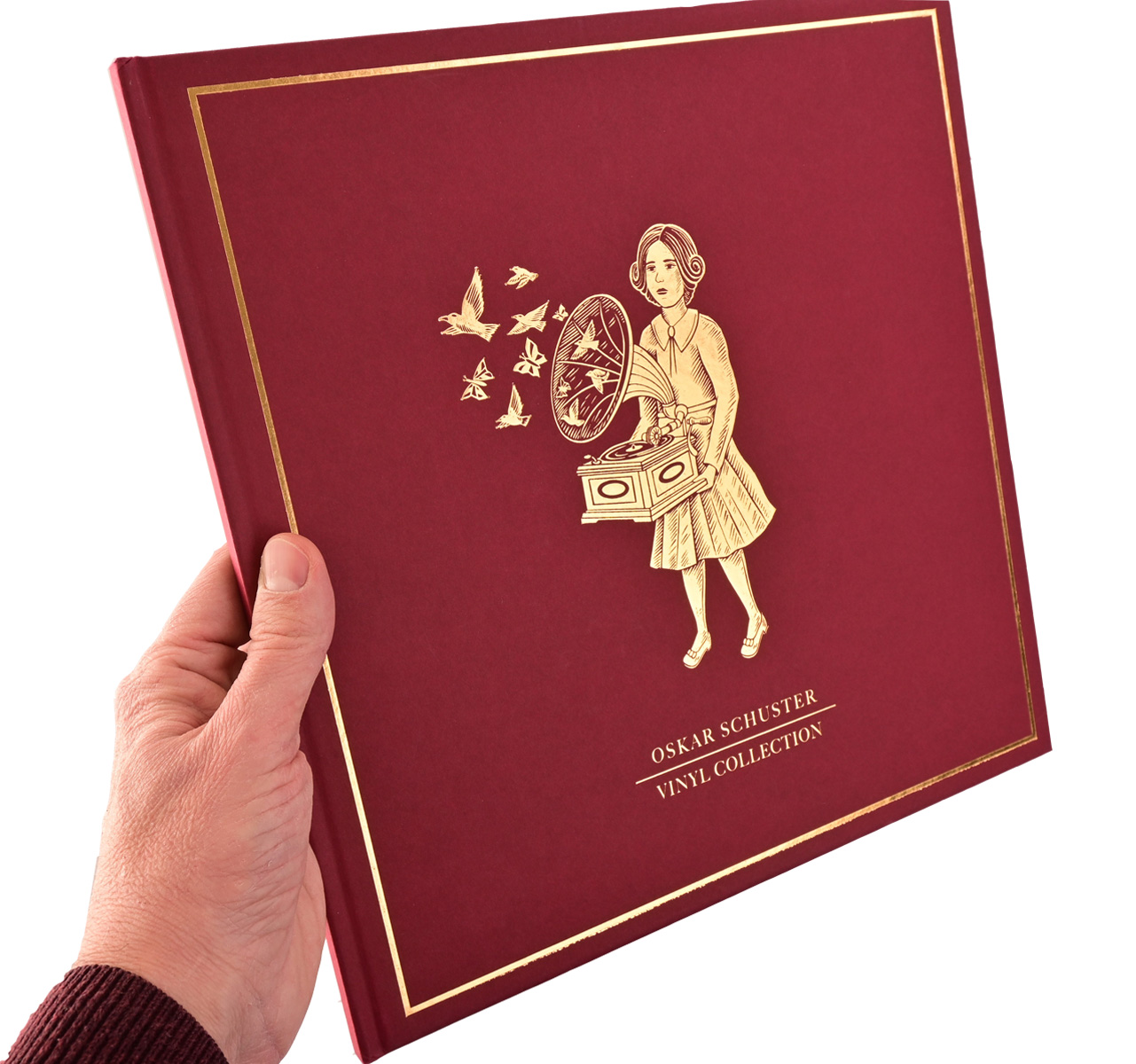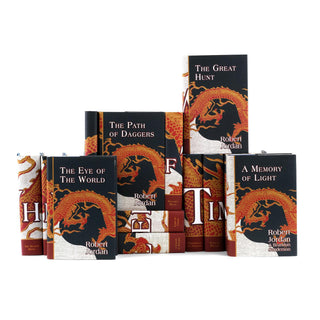A Curated Guide to Critically Acclaimed Hardcover Books
A Curated Guide to Critically Acclaimed Hardcover Books
Blog Article
A Comprehensive Overview to the Refine of Hardcover Books Printing
When you start the journey of hardbound book printing, recognizing the entire procedure is essential. From preparing your manuscript to selecting the right materials, each step plays a critical role in the final product. You'll require to ponder design elements and printing techniques that suit your vision. As you browse through binding and high quality control, you'll discover that every decision influences guide's general appeal. So, what comes next off in this elaborate process?
Understanding the Hardcover Book Structure
When you discover the globe of hardcover books, you'll promptly see that their structure is deliberate and distinctive. You'll discover a material or natural leather treatment, which not just enhances appearances however also includes to the book's long life.
The text block itself is composed of multiple trademarks, or folded up sheets, sewn with each other for toughness. You'll see that the spinal column is strengthened, permitting a smooth lay-flat reading experience - hardcover books. Furthermore, the publication's weight frequently shares a feeling of quality and durability
Hardcover publications normally include a dirt coat, which serves as an advertising tool while safeguarding the cover. Recognizing these components assists you appreciate the workmanship behind hardbound publications and their distinct appeal in the literary world.
Manuscript Preparation and Editing
Obtaining your manuscript all set for printing is vital, and it starts with proper format standards. You'll require to recognize the editing process to fine-tune your job and ensure it reverberates with visitors. And also, understanding proofreading techniques can aid you catch those bothersome errors prior to your book mosts likely to publish.

Manuscript Format Guidelines
Proper manuscript format is vital for creating a professional-looking hardcover publication. Beginning by selecting a basic font like Times New Roman or Arial in 12-point size. Usage double-spacing throughout the record to boost readability. Set your margins to 1 inch on all sides, offering your text space to take a breath. Number your web pages in the top right corner, and include your chapter titles at the start of each new area. Usage clear headings to indicate areas, and stay clear of extreme formatting like bold or italics unless required. Make certain to check your manuscript for consistency in design, making certain that everything from spelling to spacing sticks to your chosen guidelines. Following these steps will certainly establish a solid foundation for your publication.
Editing And Enhancing Process Fundamentals
Modifying your manuscript is an important action that can change it from a rough draft into a sleek end product. Begin by going through your work critically, concentrating on structure, clarity, and circulation. Look for disparities in your story, character growth, or argumentation. It's helpful to take breaks between rounds of modifying to gain fresh viewpoints. Do not wait to reduce unnecessary material or rephrase uncomfortable sentences; this will certainly boost readability. Take into consideration looking for feedback from trusted peers or specialist editors who can offer important insights. Bear in mind, editing and enhancing isn't practically taking care of mistakes; it has to do with refining your voice and guaranteeing your message resonates with viewers. Accept the process, and you'll see your manuscript sparkle.
Checking Strategies Review
Once you've brightened your manuscript via editing, the next action is to assure it's correct that could distract viewers. Begin by taking a break after modifying; fresh eyes capture errors much better. Read your manuscript aloud-- this aids you hear uncomfortable wording and area typos. Use electronic devices like spell checkers for initial scans, yet don't depend exclusively on them. Consider printing your manuscript; analysis theoretically can disclose mistakes that screens miss. Concentrate on one kind of mistake at once, whether it's spelling or grammar, to stay clear of sensation overwhelmed. Lastly, get a trusted buddy or specialist proofreader to provide a fresh point of view. Their responses can highlight concerns you might neglect.
Creating the Publication Cover and Inside
When you're designing your book cover and inside, you'll wish to concentrate on essential style components that capture your target market's attention. Selecting the best typography designs and very carefully picking colors and images can make all the difference in communicating your book's theme. Let's explore how these selections can elevate your work and attract visitors.
Important Layout Components
Producing an appealing book cover and a well-designed interior is crucial for bring in readers and boosting their experience. Pick colors and pictures that mirror your book's style and state of mind.
For the interior, concentrate on format and white area. A clean, organized layout helps visitors navigate effortlessly. Think about using chapter headings and subheadings to direct them with the content. Aesthetic elements, like pictures or graphics, can additionally boost engagement however should enhance the text, not overwhelm it. Remember, a cohesive layout throughout your book cultivates an expert appearance that can significantly impact a viewers's decision to select it up.
Picking Typography Designs
Typography plays a crucial role in both the book cover and interior decoration, forming how visitors view your web content. When choosing typography styles, consider your book's category and target market. A timeless serif typeface may function well for literary fiction, while a modern-day sans-serif could suit a modern story. Warranty readability; your text needs to be very easy on the eyes, especially for longer flows. Focus on font size and line spacing, as these aspects influence overall flow. Blending fonts can include rate of interest, however limit it to two or 3 to preserve comprehensibility. Believe concerning pecking order-- utilize different styles for headings and body message to assist visitors easily via your work. Your typography selections will significantly influence the viewers's experience.
Shade and Images Selection
Selecting the right colors and images is important for recording viewers' attention and conveying your book's motifs. Begin by considering your style; lively shades might work for a children's book, while muted tones match a mystery book. hardcover books. Use images that resonates with your content-- photos, images, or abstract designs can improve your message
When making the cover, make particular the images doesn't bewilder the title and writer's name; quality is key. This natural technique not just elevates your book's aesthetic however also improves the visitor's experience, making it extra memorable.
Choosing the Right Paper and Products
When selecting paper and materials for your hardcover publication, it's necessary to ponder how they'll influence the overall look and feeling of your task. Begin by selecting the appropriate paper weight; much heavier stock typically conveys top quality and durability, while lighter paper can produce an extra delicate touch. Consider the surface as well; glossy paper improves pictures and shades, while matte can provide an innovative, downplayed appearance.
Don't ignore the find out here cover products. Fabric, natural leather, or printed paper can establish the tone for your book. Opt for acid-free paper to avoid yellowing over time if your task includes pictures. In addition, consider the binding materials; utilizing top quality glue assurances your book lasts.
Inevitably, the choices you make below show your vision, so put in the time to example various products (hardcover books). Your selections will certainly assist create a book that's not only aesthetically attractive however also long lasting and practical
The Printing Process: Methods and Technologies
A selection of printing strategies and modern technologies can bring your hardbound publication to life, each offering special benefits. Digital printing is a prominent choice for short runs, permitting fast turnaround and cost-effective services. When you need to print smaller quantities without sacrificing top quality, it's perfect. On the various other hand, offset printing excels in generating big volumes, providing regular and top notch results. This method is suitable for substantial publications where color accuracy and great details issue.
For unique effects, you may consider methods like foil marking or embossing, which can add an elegant touch to your cover. Furthermore, you can go with numerous inks, including environment-friendly options that accommodate ecologically conscious viewers. Comprehending these strategies assists you make educated decisions, ensuring your hardcover book not only looks great but additionally fulfills your production needs properly. Select the right technique to elevate your book's charm and effect.
Binding Techniques for Hardcover Books
A number of binding methods can transform your hardcover book into a sturdy and eye-catching product. An additional approach is the perfect binding, which makes use of adhesive to hold the pages with each other, allowing for a smooth spine yet less sturdiness compared to situation binding.
You could likewise take into consideration spiral binding, which allows your publication to lay level, making it perfect for workbooks or guidebooks. However, it does not supply the very same safety cover as situation binding. There's the saddle stitch technique, appropriate for smaller publications, where sheets are folded up and stapled with each other. Each binding approach has its advantages and fits different requirements, so assume concerning your publication's purpose and target market when picking the very best alternative for your job.
Quality Assurance and Final Touches
After choosing the right binding technique for your hardcover publication, top quality control ends up being important to validate your final item satisfies your assumptions. Begin by inspecting the printed web pages for any kind of mistakes or inconsistencies in shade and design. You don't intend to miss any kind of typos or misprints that might affect your visitors' experience.
Following, check the binding stability. Validate the pages are firmly attached and that the spinal column is sturdy. A well-bound publication not only looks expert yet also really feels sturdy in your hands.
Additionally, take notice of the cover. Try to find any scuff marks or imbalances in the artwork. Make certain they're applied constantly across all copies. if you have actually decided for special finishes like embossing or foil marking.
Lastly, conduct an extensive inspection of the entire set before moving to circulation. This way, you can validate that every book shows my sources your high requirements.
Often Asked Questions
For how long Does the Hardcover Publication Printing Refine Commonly Take?

What Is the Minimum Order Amount for Hardcover Books?
The minimum order amount for hardbound publications normally starts around 100 duplicates, but it can vary based upon the printer. You need to browse this site check with your chosen printing solution for their specific needs and prices.

Can I Publish Hardcover Books in Customized Sizes?
Yes, you can publish hardcover books in custom dimensions. Several printing services provide flexibility with measurements, allowing you to select a style that suits your job. Just verify the specifications before placing your order.
Are There Eco-Friendly Options for Hardcover Book Printing?
Yes, you can locate environmentally friendly options for hardbound publication printing. Numerous firms use sustainable inks and recycled materials. Just ask your printer concerning their eco-friendly methods to guarantee your job aligns with your environmental values.
What Are the Expenses Connected With Hardbound Publication Printing?
When thinking about hardbound book printing costs, you'll need to variable in products, style, and printing techniques. Extra expenses like shipping and binding can likewise impact your overall budget plan, so strategy appropriately for your project.
When you start the journey of hardbound book printing, recognizing the entire procedure is crucial.A range of printing techniques and modern technologies can bring your hardcover book to life, each offering distinct advantages. How Lengthy Does the Hardcover Publication Printing Process Typically Take?
The hardbound publication printing procedure usually takes about 2 to 6 weeks.Yes, you can find eco-friendly choices for hardbound book printing.
Report this page